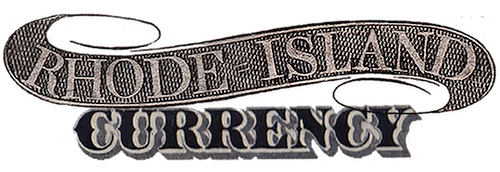Union Trust Company, Providence
As local institutions evolved beyond the national banking system at the turn of the century, the Union Trust Company of Providence was one of the formidable players in Rhode Island’s financial scene, alongside the Hospital Trust and Industrial Trust companies. As a state-chartered trust company, it was not able to issue any currency, but its history is significant enough to be included on this website nonetheless.
The enterprise was very much the creation of Marsden Jasael Perry, who began his association with the business in 1881, when it was then known as the Bank of America.* A report from 1905 provides this background:
“May 9, 1890, at a meeting of the stockholders, the business and assets of the Bank of America were transferred to the Bank of America Loan & Trust Company, which was organized to succeed the former, with a capital of $250,000. From this time on there was a more rapid increase in business and deposits. In January, 1894, the name was changed to the Union Trust Company. Mr. Perry then conceived of the idea of absorbing several important banking institutions. A strong addition to the executive management was made in the election of Michael F. Dooley, of Hartford, to the secretaryship. The election of Mr. Perry to the presidency in 1901 brought a new epoch of growth.” — Trust Companies, Volume II, Part II, July-December 1905.
Perry was a monopolist who controlled most of the utilities in Rhode Island. He owned a majority of the state’s electric railways, was as an ally of Senator Nelson Aldrich and served as president of both Narragansett Electric and the Nicholson File Company. He lived in the John Brown house on Power Street and aimed to be the greatest collector of Shakespeariana in the world. (For an exploration of Perry’s business empire, click here.)
With Union Trust, Perry quickly built a financial powerhouse. As Bank of America, the institution had assets of only $287,000 in 1881. By 1905, Union Trust had assets of over $16 million. In the interim, he had purchased several major financial institutions, including the City Bank of Providence (1899), the Commercial National Bank (1903) and the Weybosset National Bank (1904).
The bank built a grand edifice at 62 Dorrance Street in 1901. It was designed by Stone, Carpenter and Wilson in the Beaux Arts style. The structure still stands today.
In June of 1907, Union Trust merged with the Manufacturers Trust Company and its chief executive, J. Edward Studley, assumed the presidency of the new enterprise. Even though his new title at the merged organization was Vice President, Marsden J. Perry remained very much in control.
Union Trust suffered a major setback during the financial panic of 1907 when there was a run on the bank and it was placed in receivership. While some sympathetic reporters claimed it was, “only a matter of a lack of small bills” and chastised the immigrant Italian depositors for overreacting, it quickly became clear that the bank was suffering. In the ensuing investigation, Perry resigned from the bank and focused instead on railroads and electrifying Providence. He died in 1935.
On March 14, 1908, Union Trust resumed business under a reorganization plan, but it took until February 5, 1912 for the business to pay back all of its former depositors.
December 5, 1950, Union Trust merged with Providence National Bank to form the Providence Union National Bank. On October 28, 1953, this institution was merged with the Industrial Trust Company to become the Industrial National Bank.
* There were several institutions across the country named “Bank of America” in the 19th and early 20th centuries. This bank, founded in Providence, was not then associated with the Bank of America of today (based in Charlotte, North Carolina). Its successor institutions, however, did eventually get acquired into the fold of that mega bank (Fleet Financial/Bank of America merged in April, 2004).
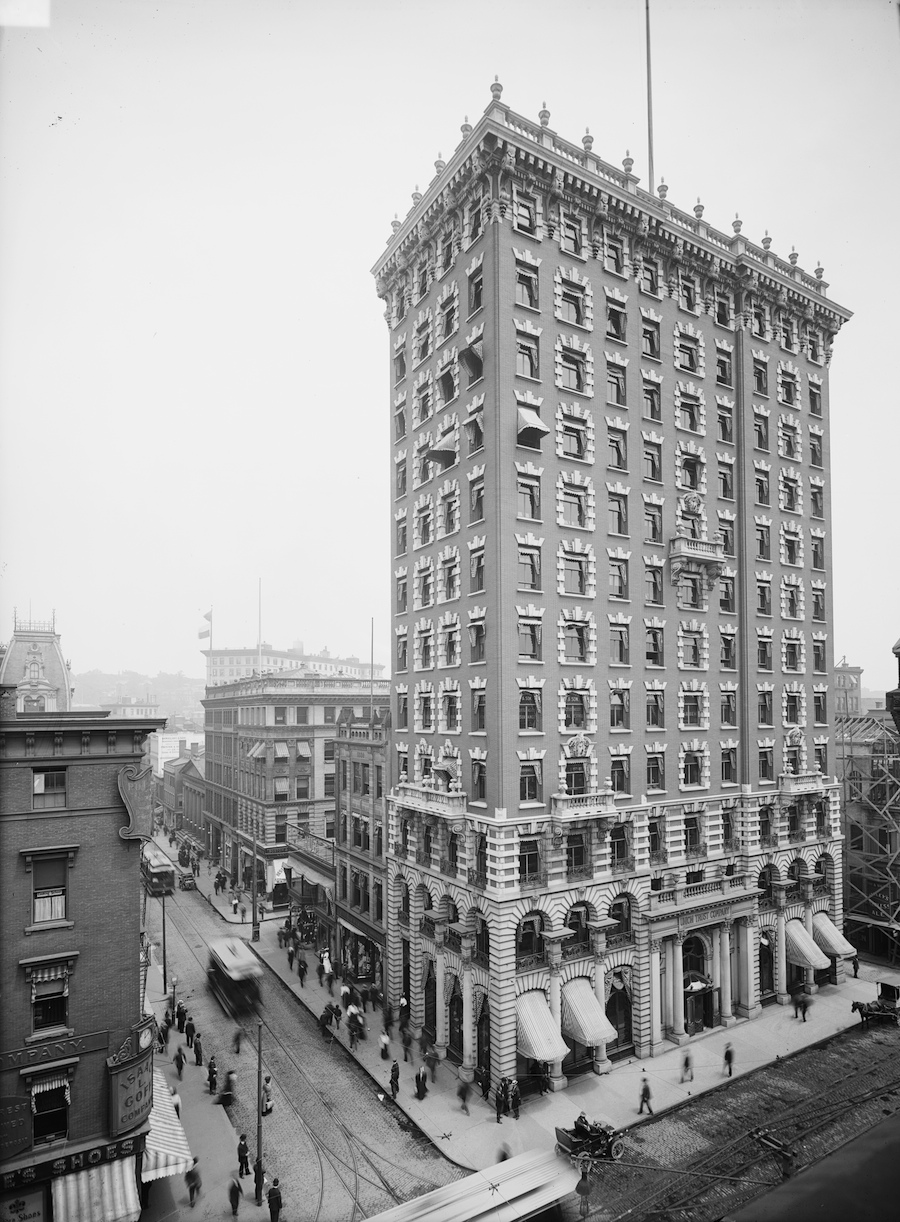
Circa 1906 photo showing the 12-storey Union Trust Building on Westminster Street. (Source: Library of Congress.)
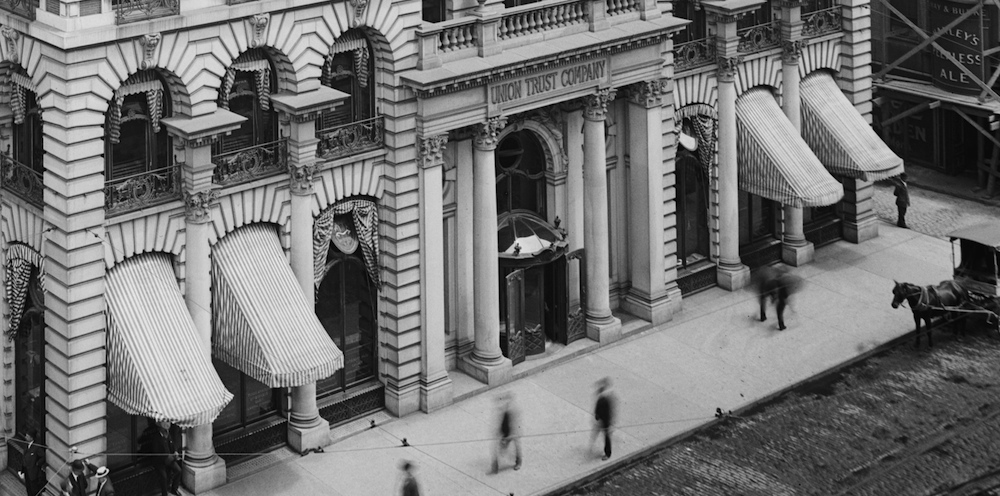
Detail of the Union Trust façade, showing the ornate entrance.

The Union Trust building today.

Detail.
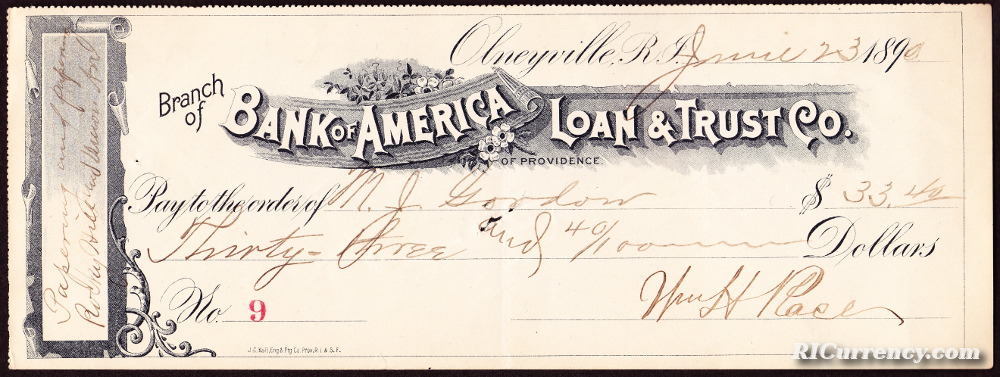
For the four years prior to 1894, this institution was known as the Bank of America Loan & Trust Company. This piece originates from its Olneyville branch.
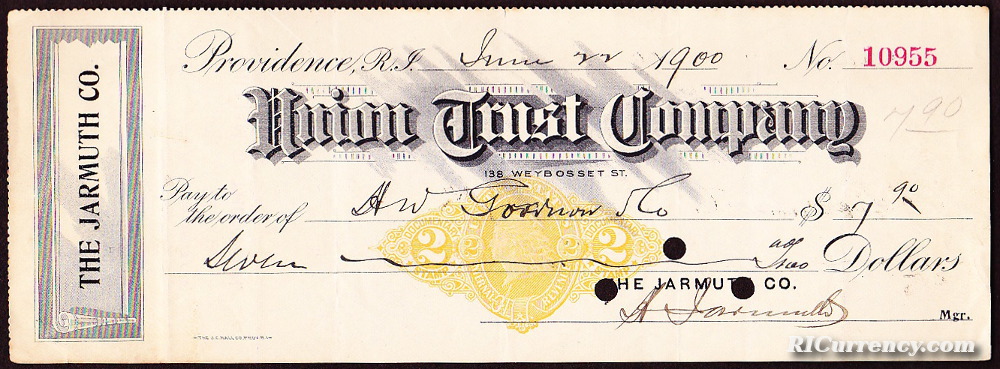
Union Trust check dated June 22, 1900.
